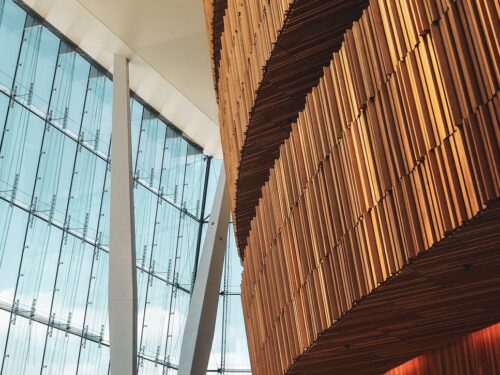Den Norske Opera Ballett
Den Norske Opera Ballett or the Norwegian National Opera and Ballet is just a breath away from the Munch Museum. It is located on the bank of the Bjørvika district, near the stock exchange and the central station and it is the newest landmark of the city. Its distinctive marble and glass building of the Norwegian National Opera & Ballet is the true epitome of modern style.
Located right at the harbor the building seems to rise directly up from the Oslofjord with its white marble angled roof allowing its visitors to climb above it and enjoy panoramic views of the city and the fjord. Its large-scale windows at street level provide the public with glimpses of rehearsals and workshop activities while if you see the building from the fjord you will notice a facade of solar panels, Norway’s biggest that supply the building with much of the energy it needs to operate.
The Opera officially opened its gates in April 2008 after 5 years of construction work and is the largest cultural building to be created in Norway since the construction of the Nidaros Cathedral in Trondheim at the start of the 14th century.
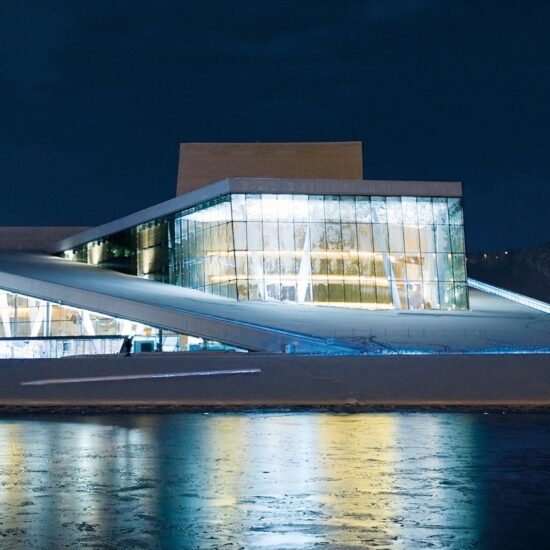
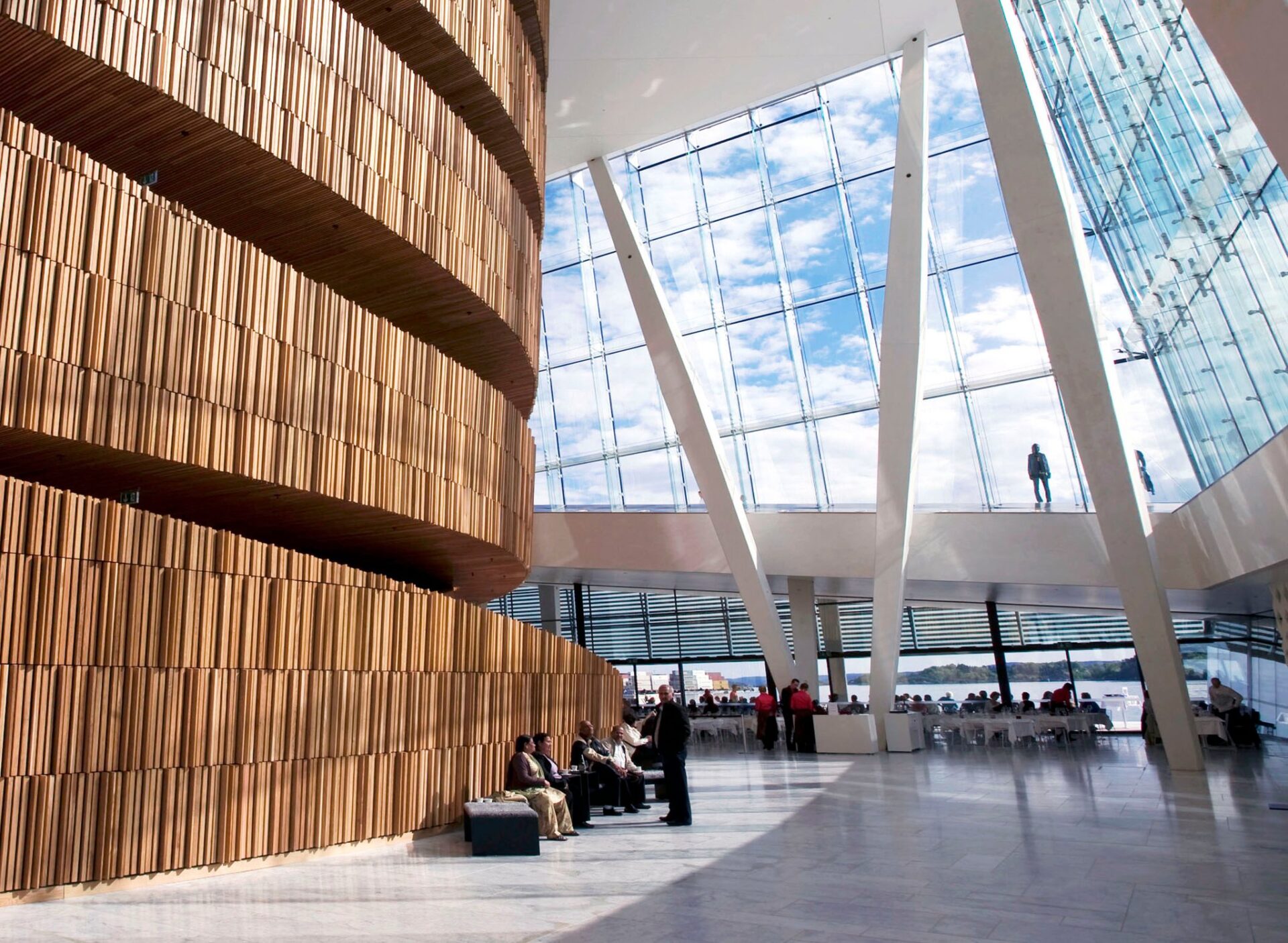
It has won an array of awards, both at home and abroad, including the prestigious Mies van der Rohe Prize (2009) and the International Architecture Award 2010. It was also named World Cultural Building of the Year in 2008.
The floor area of the base of the building is equivalent to four international standard football fields and measures more than 38,000 square meters. The building boasts three stages and a total of 1,100 rooms. The foyer is a huge open room with minimalist decor, using simple materials such as stone, concrete, glass, and wood. Here you find seating areas, bars, and restaurants.
The main classical horseshoe-shaped auditorium, which is one of the most technologically advanced in the world, offers great scenographic flexibility and fantastic acoustics.
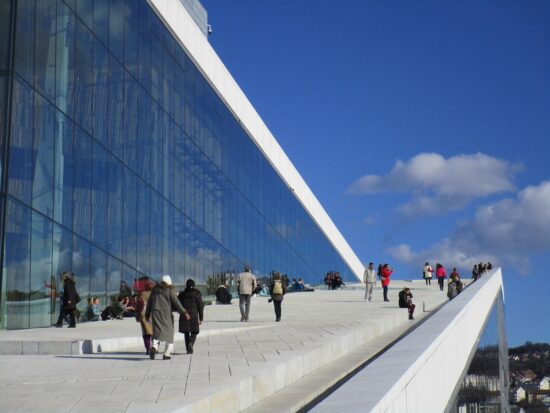

The stage area measures several thousand square meters and parts of it are as much as 16 meters below the surface of the water. In contrast to the light foyer, the main auditorium is decorated in ammonia-treated Baltic oak. The seat-backs of the 1,350 seats contain individual screens with subtitles in eight different languages.
Boat builders from the northwest coast of Norway have carved the balconies, and hanging from the ceiling is Norway’s largest circular chandelier. It is 7 meters in diameter, weighs 8 tons, has 5,800 crystal glass elements, and was produced by the Norwegian firm Hadeland Glassverk.

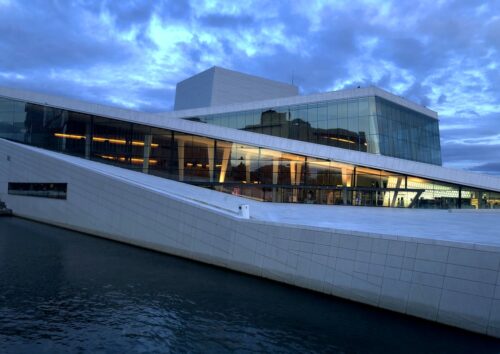
A 50-minute guided tour allows you to get an insight into some of the many facilities the Opera House has to offer and what goes on behind the scenes before the curtain rises. You can walk out onto the Main Stage, or visit the costume workshop or scene painting room, and possibly even meet a singer or dancer as we make our way around. Learn about architecture, stagecraft, opera, and ballet from our knowledgeable tour guides. More

